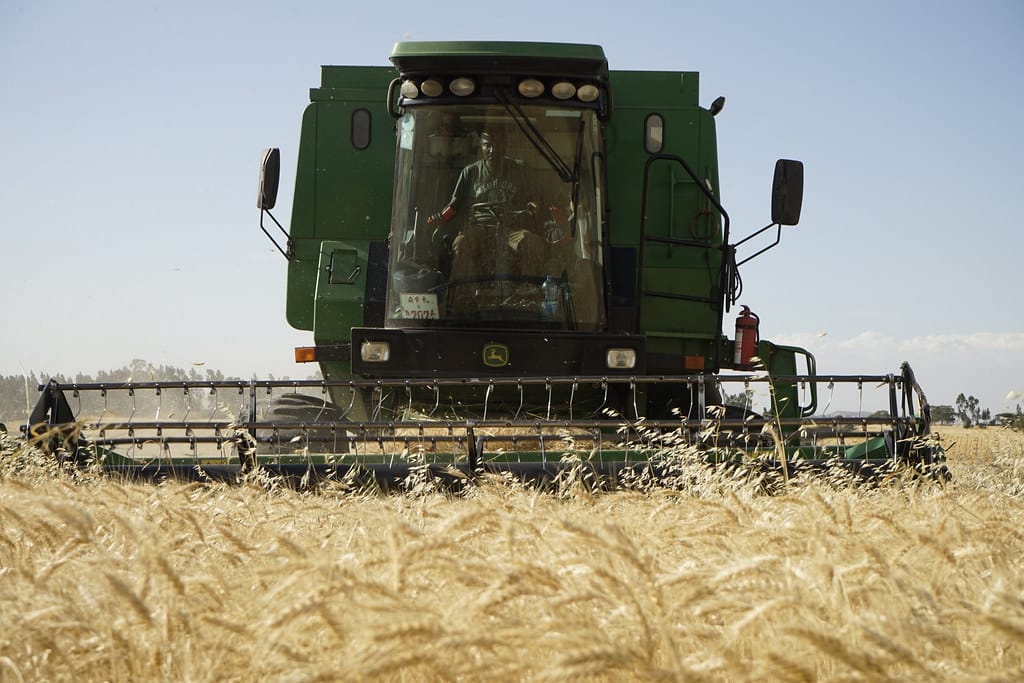The 2018 Farm Bill is due to expire this year, and U.S. lawmakers have already begun working out the next version. This food-related omnibus bill was introduced ninety years ago as a “temporary” measure during the Great Depression. It’s been reauthorized by Congress every five years since, and recent ones cobble together two seemingly unrelated programs, the Supplemental Nutrition Assistance Program (SNAP), formerly called food stamps, and federal farm subsidies.
However, the two share an important link. One program gives tax dollars to those who cannot afford food; the other seeks to make food less affordable. Taxpayers are forced to help prop up crop prices only to be taxed again to address the consequences. The American people must wake up to the scam hidden in the Farm Bill if we ever wish to see it end.
SNAP gets the most attention during Farm Bill negotiations in part because it eats up most of the bill’s price tag. However, it is also the only Farm Bill program where negotiations fall neatly within party lines. Negotiations over farm subsidies are less partisan. Lawmakers mostly push to secure benefits for their districts and friends in the industry. This year, the media is focused on the Democrats’ push for more funding and fewer restrictions for those relying on SNAP. Republicans are voicing concern about government spending and pushing for more restrictions on those receiving benefits.
If Democrats were serious about wanting to help the poorest Americans afford food and Republicans were serious about wanting to cut federal spending, they could accomplish both these goals by rolling back the other part of the Farm Bill. From the beginning, America’s farm subsidies have always aimed to do one thing above all: keep crop prices high.
In his book, America’s Great Depression, Murray Rothbard notes that American farm subsidies have their roots in several failed cartelization attempts in the 1910s and 1920s. Farmers formed organizations like the National Wheat Growers’ Association and American Cotton Association. These groups then tried to collectively cut production to bring about higher prices. As Rothbard explains, “The chief stumbling block in all these schemes was the noncooperating farmer, the rugged individualist who profited by expanding his production while his rival farmers cut theirs.”
Arbitrarily raising prices did not work on the free market—government assistance was needed. This assistance came in 1929 when President Herbert Hoover signed the Agricultural Marketing Act. With that, the alliance between the federal government and Big Agriculture was born. This alliance would spend the Great Depression wrestling with the laws of supply and demand. When the government raised prices, output increased, threatening to bring prices back down. The solution, made famous in John Steinbeck’s 1939 novel, The Grapes of Wrath, was to burn crops, kill livestock, and spray produce with toxic chemicals. The government destroyed food to keep prices high while Americans starved.
Today, farm policy is far less dramatic because we are not currently in an economic depression. However, the primary goal of the agricultural portions of the Farm Bill remains the same. The government restricts the domestic supply of certain crops to keep prices well above the world price. Take sugar, for example. Each year, a United States Department of Agriculture (USDA) planning board awards market allotments to a handful of sugar producers, directing them on the total supply they can produce that year.
For fiscal year 2022, the USDA ordered the production of exactly 10,370,000 tons of cane and beet sugar. American Crystal Sugar, which spends the most on lobbying of any sugar producer, was awarded the largest allotment, meaning they were legally guaranteed the most sugar sales. They also get to make those sales at a price double the global market rate. The federal government also props up the domestic prices of milk, cheese, peanuts, avocados, onions, beef, poultry, cotton, tobacco, and more.
The Farm Bill subsidizes farms more directly through crop insurance. Taxpayers are forced to pay 60 percent of crop insurance premiums. Part of the program insures against crop loss, which, when subsidized, leads to riskier farming practices and crop allocations. The subsidized insurance also protects farmers from losses incurred by falling crop prices. There are fourteen companies authorized to sell subsidized crop insurance, and they are required to sell to every eligible farmer who requests it. The USDA also determines which crops are insured and at what rate on a county-by-county basis.
This ability to choose which crops get insured, combined with the scale of the subsidies, gives Washington a great deal of control over the nation’s food supply chain. Democrats are working to use that control to compel farmers to adopt “climate-friendly” practices, while some Republicans want to force farmers to join their crusade against China.
The Farm Bill creates the very problems it then promises to solve. The Democrats may say they want to help the poor afford food. Republicans can claim they want to cut spending. However, both want to keep prices high to benefit Big Agriculture and then use that leverage to steer America’s food supply chain to align with their own agendas. Washington is ripping us off every five years. To stop a recurring nightmare, we must first wake up.







